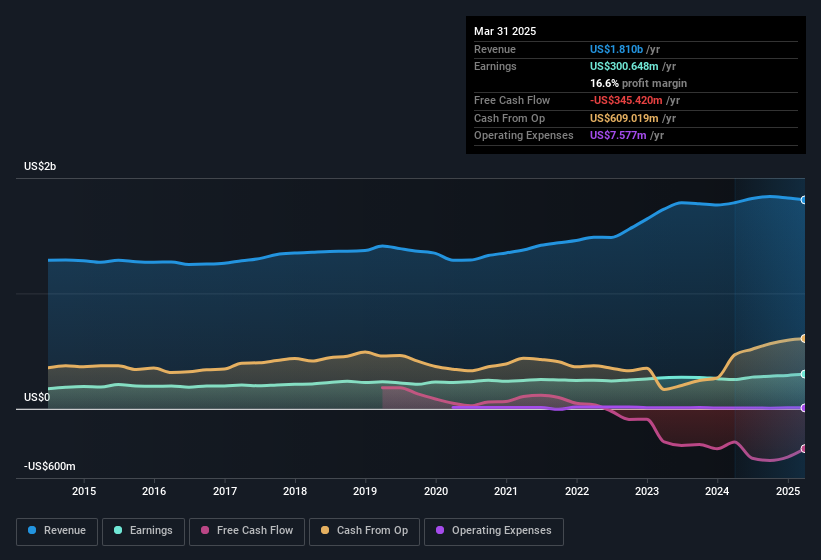
IDACORP, Inc.'s (NYSE:IDA) robust earnings report didn't manage to move the market for its stock. Our analysis suggests that shareholders have noticed something concerning in the numbers.

To understand the value of a company's earnings growth, it is imperative to consider any dilution of shareholders' interests. In fact, IDACORP increased the number of shares on issue by 6.6% over the last twelve months by issuing new shares. As a result, its net income is now split between a greater number of shares. To celebrate net income while ignoring dilution is like rejoicing because you have a single slice of a larger pizza, but ignoring the fact that the pizza is now cut into many more slices. Check out IDACORP's historical EPS growth by clicking on this link.
How Is Dilution Impacting IDACORP's Earnings Per Share (EPS)?
As you can see above, IDACORP has been growing its net income over the last few years, with an annualized gain of 22% over three years. And in the last year the company managed to bump profit up by 19%. On the other hand, earnings per share are only up 13% in that time. So you can see that the dilution has had a bit of an impact on shareholders.
Changes in the share price do tend to reflect changes in earnings per share, in the long run. So it will certainly be a positive for shareholders if IDACORP can grow EPS persistently. However, if its profit increases while its earnings per share stay flat (or even fall) then shareholders might not see much benefit. For the ordinary retail shareholder, EPS is a great measure to check your hypothetical "share" of the company's profit.
That might leave you wondering what analysts are forecasting in terms of future profitability. Luckily, you can click here to see an interactive graph depicting future profitability, based on their estimates.
Our Take On IDACORP's Profit Performance
IDACORP shareholders should keep in mind how many new shares it is issuing, because, dilution clearly has the power to severely impact shareholder returns. Because of this, we think that it may be that IDACORP's statutory profits are better than its underlying earnings power. Nonetheless, it's still worth noting that its earnings per share have grown at 15% over the last three years. Of course, we've only just scratched the surface when it comes to analysing its earnings; one could also consider margins, forecast growth, and return on investment, among other factors. In light of this, if you'd like to do more analysis on the company, it's vital to be informed of the risks involved. To help with this, we've discovered 2 warning signs (1 shouldn't be ignored!) that you ought to be aware of before buying any shares in IDACORP.
Today we've zoomed in on a single data point to better understand the nature of IDACORP's profit. But there are plenty of other ways to inform your opinion of a company. For example, many people consider a high return on equity as an indication of favorable business economics, while others like to 'follow the money' and search out stocks that insiders are buying. While it might take a little research on your behalf, you may find this free collection of companies boasting high return on equity, or this list of stocks with significant insider holdings to be useful.
Have feedback on this article? Concerned about the content? Get in touch with us directly. Alternatively, email editorial-team (at) simplywallst.com.
This article by Simply Wall St is general in nature. We provide commentary based on historical data and analyst forecasts only using an unbiased methodology and our articles are not intended to be financial advice. It does not constitute a recommendation to buy or sell any stock, and does not take account of your objectives, or your financial situation. We aim to bring you long-term focused analysis driven by fundamental data. Note that our analysis may not factor in the latest price-sensitive company announcements or qualitative material. Simply Wall St has no position in any stocks mentioned.